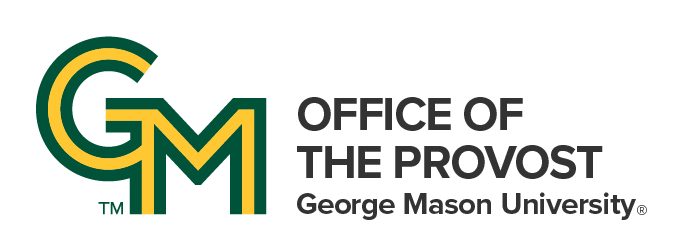In This Story
by Austin A. Deray
When moving to Northern Virginia, I was worried about leaving my family and friends in Georgia, my chosen community. However, when I got to Mason, thanks to my program and my work unit, I found my new tribes through the institution and a culture of cohorts.1

A cohort was originally defined by Merino et al. “as a group of students who begin a program of study together, share the same sequence of classes, faculty members, and instructional activities toward completion of a specific degree or certification,” but “has expanded to include the development of collaborative projects, self-directed goals, and a network of academic and social support.”2
For me this idea of a cohort has been key to not only my academic and professional success here at Mason, but also a sense of well-being in my life. Now I know some of you are thinking, “I don’t have a cohort.” I know that to be true for many programs here at Mason. I would suggest then maybe finding a way to make your own model of a cohort. And, yes, I do plan to share one example of how to go about doing it later on.
In North American universities, three cohort systems tend to be most popular: closed, open/mixed, and fluid. From my experience here at Mason, I’d say we are mostly a mixture of open and fluid systems. The open/mixed cohort is one “whereby students take a core set of courses together and then enroll in additional coursework to fulfill their needs.”3 On the other hand, the fluid cohort is also know as the “course-by-course [cohort], whereby students may enter the cohort at various times instead of only one point of entry.”3

Among my office colleagues, we have experienced both types of cohorts. I am a member of a mixed cohort through my academic program, where all the Cultural Studies PhD students take the same core classes with their admittance year members and generally take similar electives, while trying to begin fieldwork around the same time. My two workmates, on the other hand, have fluid cohorts in their programs. One only knew one other student in her program who had started around the same time and was taking similar classes. The other found, while she started with 4-5 other students, that she would not take a core set of classes with members of her entry class; she would eventually take classes with all the members of her class through the elective course offered in her program. For the graduate students in my office, what was great was our ability to form a work cohort and our ability to rely not only on our program cohorts, but also on each other, creating our own community.
One key component of both a mixed and fluid cohort is sharing meals together.4 From the beginning, my academic cohort quickly began to work on readings, papers, and projects together. One member of my cohort, who served as the original ringleader, would always suggest we meet to have lunch, dinner, or just share some shisha while we work. At work, our office has family lunch almost every day, and that is where we began to have a sense of cohort or a sense of our work community.
What is key about the program cohort model and my own description of our work cohort, or work community, is that we have reduced “level[s] of loneliness” and that we “offer support to one another,” which is key to the well-being5 and academic success of graduate students. While some suggest that only members of an academic cohort can truly relate to the experience of being in a specific graduate program, I’d suggest I get as much support from my work community as I do from my program cohort.

I think the true essence of the cohort is what is important, not the institution or structure. So, if your program has a cohort system, try buying into the practice. Spend some time with your cohort, get a meal with them; I think you’ll enjoy the support and sense of community they can give you. If your program has a mostly fluid system or does not have a cohort at all, try to find a way to create your own cohort or tribe; invite classmates to a dinner or lunch, study over coffee or hookah. The idea is that graduate school is hard, which we all already know, and having a support system or a group of people to turn to is key to both your academic success and your personal well-being.
As always, have a great day and week.
Best,
Austin
1 McCarthy, John, Mary Ellen Trenga, and Barbara Weiner. (2005) The Cohort Model with Graduate Student Learners: Faculty-Student Perspectives: Adult Learning: Sage Journals, 22-26.
2 Merino, A., Muse, I., & Wright, D. J. (1994). Building graduate school success: The cohort group. The Journal of the California Association of Professors of Educational Administration, 6, 64-74
3 Yerkes, D. M., Basom, M.R., Norris, C, & Bamett, B. (1995). Using cohorts in the development of educational leaders. (ERIC Document Reproduction Service No. ED 387 858).
4 McCarthy, et al. (2005), 24.
5 Nords, C. J., & Bamett, B. (1994). Cultivating new leadership paradigm: From cohorts to communities. (ERIC Document Reproduction Service No. ED 387 877).
This blog post has been edited to reflect updated information and web addresses.
Edited by Nikita Thadani, 3/31/2022.
